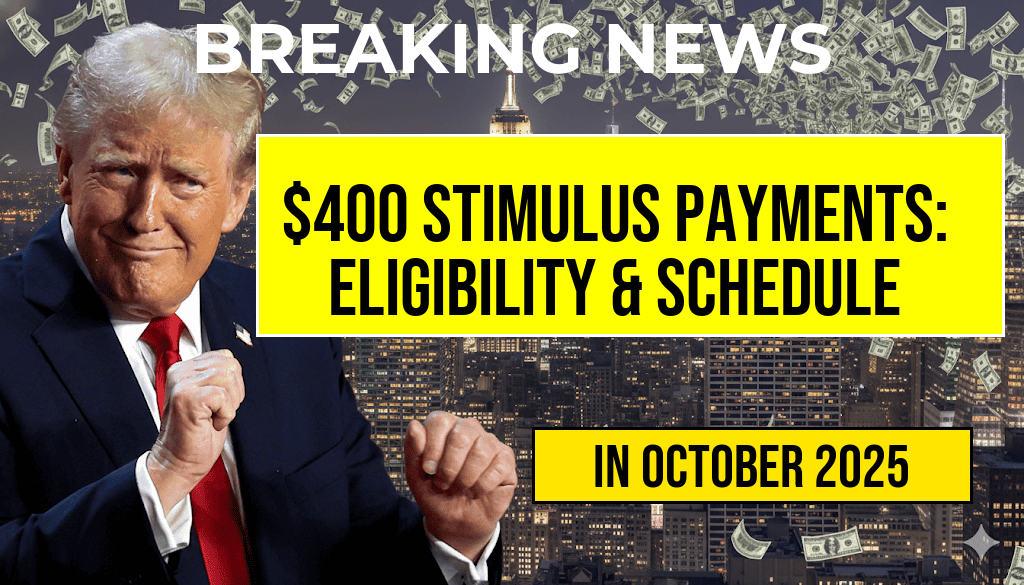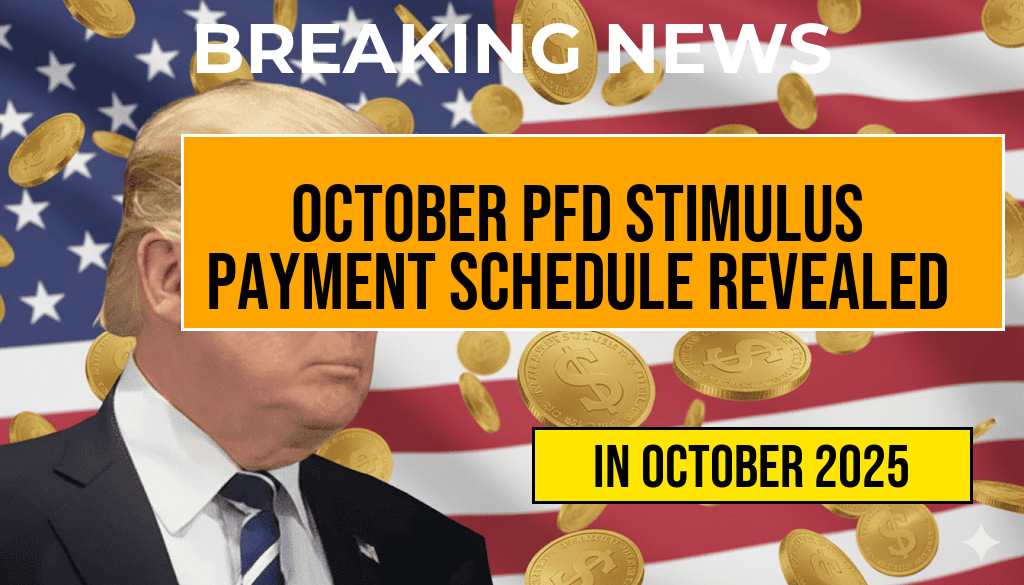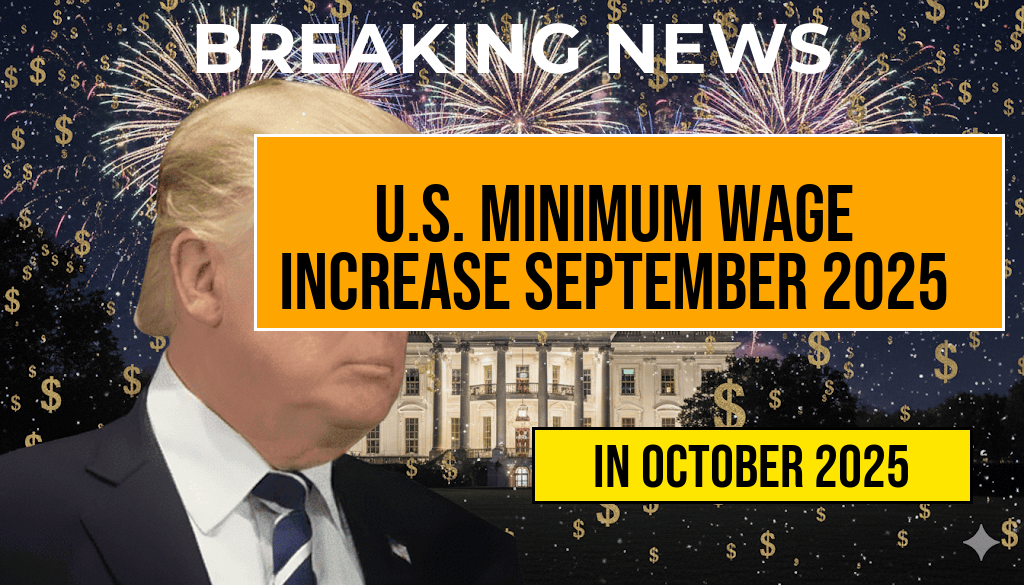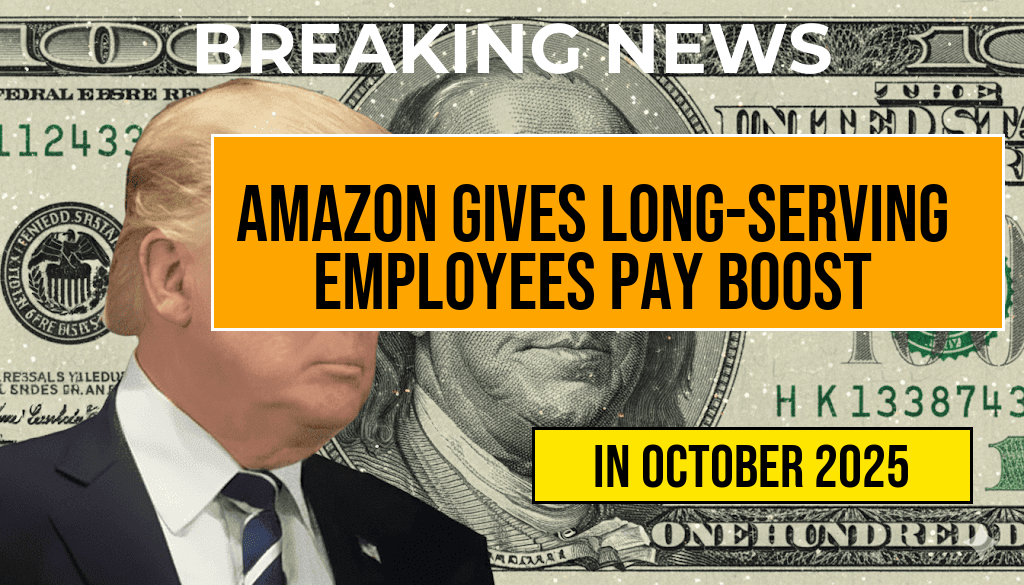Eligible Americans can now expect a $400 stimulus payment as part of a recent federal initiative aimed at providing financial relief amid ongoing economic challenges. This one-time payment is designed to assist individuals and families facing increased expenses or financial strain. Unlike previous stimulus efforts, this program emphasizes broad eligibility criteria, ensuring that a wide segment of the population can benefit. The U.S. Department of Treasury has outlined a detailed payment schedule, with disbursements starting as early as next month, depending on applicant eligibility and processing times. This article provides a comprehensive overview of the eligibility requirements, payment schedule, and how eligible recipients can access this financial support, along with key considerations to ensure a smooth process.
Understanding the $400 Stimulus Payment Initiative
The $400 stimulus payment was introduced as part of a broader legislative package intended to bolster household budgets during economic uncertainties, inflationary pressures, and ongoing recovery efforts. The program aims to quickly inject funds into the economy by reaching as many eligible Americans as possible. Unlike previous stimulus measures, which often targeted specific income brackets or demographics, this initiative adopts a more inclusive approach, with eligibility criteria designed to capture a larger population segment.
Who Qualifies for the $400 Payment?
Eligibility Requirements
- Residency: Applicants must be U.S. residents or citizens, with proof of residence required during application.
- Income Limits: The program targets households earning up to $75,000 annually for individuals or $150,000 for joint filers. Higher-income households may not qualify.
- Filing Status: Eligible recipients include those who filed a federal tax return for 2022 or 2023, or those who qualify under simplified income reporting options for non-filers.
- Age: Adults aged 18 and older qualify, with some provisions allowing for dependents to receive supplemental payments.
- Employment Status: Both employed and unemployed individuals can qualify, provided they meet income and residency criteria.
Additional Considerations
- Recipients must not be claimed as dependents on someone else’s tax return unless specifically eligible for supplemental benefits.
- Individuals with pending or past-due federal debts, such as student loans or taxes, may experience offsets, reducing the payment amount.
How to Apply and Verify Eligibility
Most applicants will automatically receive the payment if they have filed recent federal tax returns and provided current contact information. The IRS and Treasury Department are utilizing existing data to streamline disbursements. However, individuals who did not file taxes or need to update their information can do so through designated portals. The official IRS website offers tools and resources for verifying eligibility and tracking payment status (irs.gov).
Payment Schedule and Disbursement Details
| Application Period | Expected Payment Date | Payment Method |
|---|---|---|
| May 1 – May 15, 2024 | June 1 – June 15, 2024 | Direct deposit or mailed check |
| May 16 – June 15, 2024 | June 16 – July 1, 2024 | Direct deposit or mailed check |
| June 16 – July 15, 2024 | July 2 – July 15, 2024 | Direct deposit or mailed check |
Important Notes for Recipients
- Payments are issued automatically for most eligible taxpayers based on recent filings.
- Those who need to update their banking information or resolve discrepancies are encouraged to use the official IRS portal promptly.
- Recipients should be cautious of scams; official communications will originate from government sources, and no fees are required to claim the payment.
- Individuals who do not receive their payment within the specified timeframe should contact the IRS or check their status online.
Additional Resources and Support
For more detailed guidance, visit the official IRS Newsroom or consult the legislative text describing the stimulus program. Financial counseling services and community assistance programs are also available for those needing help navigating the process or managing the funds effectively (Consumer Financial Protection Bureau).
Frequently Asked Questions
Who is eligible to receive the $400 stimulus payment?
Eligible recipients include individuals and families who meet specific income and residency requirements outlined in the article. Generally, qualifying tax filers with adjusted gross income below a certain threshold are eligible to receive the payment.
How can I check if I qualify for the $400 stimulus payment?
You can verify your eligibility criteria by reviewing the detailed requirements provided in the article, including income limits, filing status, and residency status. Additionally, the official government website offers tools to confirm your qualification status.
When will the stimulus payments be distributed?
The article provides a complete payment schedule indicating the dates when the $400 stimulus payments will be issued. Payments are scheduled to be distributed over several weeks, ensuring all eligible recipients receive their funds promptly.
Are there any exceptions or special cases that might affect my eligibility?
Yes, certain exceptions and special cases such as recent changes in income, filing status, or residency may impact eligibility. It is recommended to review the detailed guidelines or consult the official resources for specific circumstances.
What should I do if I haven’t received my $400 stimulus payment by the scheduled date?
If you have not received your stimulus payment by the expected date, the article advises checking your payment status through official government portals. If issues persist, contact the designated support channels for assistance and further instructions.







